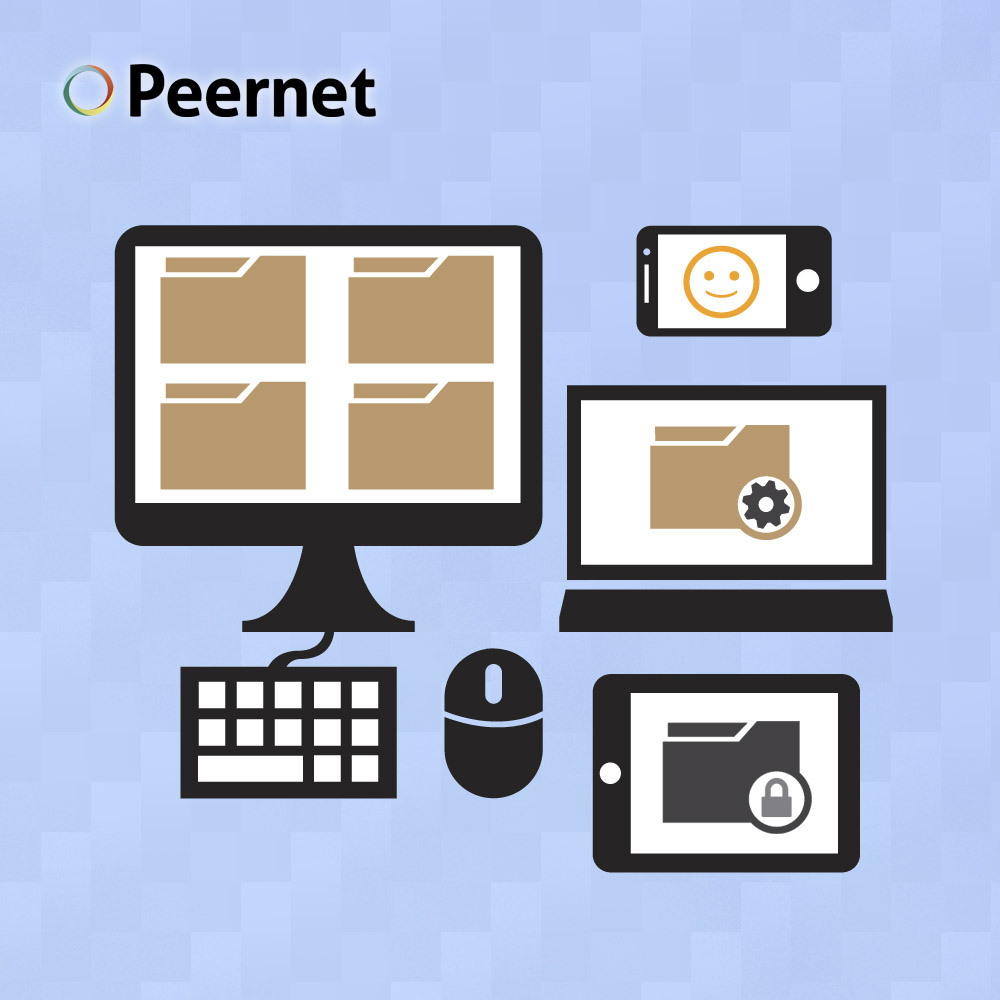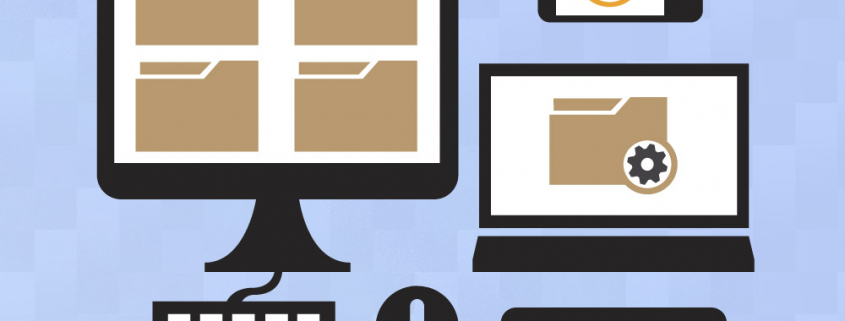How and Why to Move Your Business to Digital Record Keeping

A majority of businesses are using digital record keeping in some form or another. There are a number of benefits to this, both to your practical, everyday operations, and your long-term, and even legal obligations. The transition to digital record keeping has been underway for a long time, but increased accessibility to storage and the resultant lowering of costs has continued to drive it forward.
Here are some of the advantages of maintaining digital record keeping within your company, and how to best go about it — including tips on recommended file formats and document conversion software to make it happen.
Advantages of maintaining digital records:
- Easier information retrievalOne of the main benefits of maintaining a digital filing system is the time and organizational resources saved by being able to easily search and access files on the computer. We will touch more on this later in the piece, but the searchability of files (some formats handle it better than other) is crucial to free up employee time and resources, allowing for a more efficient overall operational structure.
- Cost savings from storage spaceYou are limited only by the cost of virtual storage space, which can scale up in quite a cost-effective manner, in comparison to adding more physical square footage for your office or document storage facility. The growth of cloud storage solutions for enterprise level businesses in recent years has made digital record keeping an even more cost-effective option.
- Protection against frivolous claimsMaintaining digital records of your dealings with customers and clients can safeguard your company in the event of a dispute. For example, you may want to retrieve copies of pertinent emails years later, in which case a digital document management system is ideal. Peernet offers a number of software solutions that make email to PDF or email to TIFF as easy as printing a document, as well as automated batch document conversion solutions.
- Simplify your accountingMaintaining digital records of sales, customer information and business details can be especially efficient in conjunction with business accounting software. This can cut down on time and resources that otherwise would be put towards the actions that drive your business forward.
- Allow for easier collaborationIf documentation needs to be continually updated, this can be easily achieved through digital records. Ease of access opens up new collaboration opportunities, and with a solid security safety net in place, this allows for increased efficiency in maintaining the accuracy of client information.
- Easily backup files and reduce threat of losing informationWhat happens if you have physical, paper copies of all your important records, and your office faces a flood, or a fire? The resulting loss of information could be devastating.With digital records, and a regular backup schedule, there’s much less concern about that. There are many cloud-based backup services out there, and an IT professional in your organization can set up a regularly scheduled backing up of files, so that even if something happens to your onsite digital storage, you’ll still have backups that you can easily restore.
- Reduce costs related to document distributionWith digital records, disseminating information is as easy as clicking a button on your mouse. The old method of information distribution seems quite antiquated these days: requesting a record, printing them out, and sending them via mail incurs all sorts of costs that you can get around or altogether eliminate by moving to a digital based document management system.
- If you’re setting up a new system now, it’s the logical route to go.Building a relatively new business? You probably wouldn’t fill the offices with typewriters, right? Well, that’s essentially what you’re doing if you’re setting up a new business and relying on paper documentation. In the near future, storage costs for digital record keeping will likely continue to decline, making it a financially prudent investment to make now. Plus, with the entrenchment of common record-keeping file formats such as TIFF and PDF, you can use the formats with the comfort of knowing that they will stand the test of time.
What are the key features for an efficient digital record keeping system?
- A reasonable cost. One of the main ideas behind the shift to digital record keeping (beyond simply keeping up with the times) is that, over the long term, the costs of maintaining digital records should be less than the cost of maintaining paper records. While there is the initial investment in file conversion software and perhaps additional physical storage or cloud space, many digital filing systems can make use of the computer and IT infrastructure already in place.
- Easy searchability. Just like in the physical world of paper records, a huge feature of an efficient digital filing system is organization to ensure easy document retrieval. There are several methods you can use to help organize your business’s digital record keeping, but keep searchability in mind when determining file formats to use as well; PDF, in particular, is ideal for many businesses in this regard. For example, if you need to look up references to certain clients or customers, digital records streamline this process far more than physical paper records ever good. Not only will good organization free up your office staff’s time and resources, it will potentially allow your business to provide better and quicker service to its customers.
- A good plan to manage future growth. The beauty of digital document storage is that unlike with physical paper storage, where you have to simply buy more square footage as your company grows, your digital records can nicely scale as your organization takes on more clients and customers. Getting a good organizational structure in place early (see our guide to file name structure for business, to start) ensures that your company will be well-equipped to maintain easy storage and retrieval for many years down the line.
What formats are best for record keeping?
TIFF
The TIFF file format is commonly used as a record keeping file format of choice for industries and institutions that require absolute confidence in the security and quality of their digital record keeping. As a format, it offers a feature set that makes it ideal for some industries. Here’s why many businesses in critical industries make use of TIFF as part of their digital record keeping.
- A high-quality format that does not suffer from degradation when saving.
- Is also capable of lossy compression to reduce file sizes.
- Widespread usage, ensuring that it can be read on nearly all modern devices and operating systems.
- Ideal format for scanned documents (it was originally created for just that purpose).
- A great deal of support for file conversions.
- Being an image format by nature, document formatting is maintained from one screen to the next.
- A secure document format that cannot be embedded with malicious code or files.
- A well-established document format that will be used for many years to come.
Commonly used in:
- The medical industry – clinics, hospitals, patient records.
- Law offices – client records.
- Municipal offices – permits, public records, etc.
- Publishing – high quality images ensure good quality on the printed page.
The PDF file format is extremely widely used in everyday business communications. It also offers a number of features that make it ideal for record-keeping purposes, such as the following:
- Easily searchable; its mix of text and images make it a versatile file format.
- Widely used and understood; supported by every operating system used in the modern business environment.
- Centralized storage, naming conventions and rich document text allows for simple document retrieval.
- Relatively small file size keeps storage costs down while maintaining good quality document copies.
- Password-protection built in to the format to ensure documents are only read by the intended recipients.
- Like TIFF, document formatting is always maintained from one computer or device to the next, giving it a huge advantage over popular office document formats such as Microsoft Word.
- Like TIFF, it’s a well-established document format that will be used for many years to come.
Commonly used in:
- Organizations that require a good level of searchability within the actual documents;
- Retail – bill of sales
- A wide range of businesses across many industries.
Get started today.
The overall business trend of a transition towards digital records continues to march along. Peernet offers a variety of software that can help facilitate the transition for your own company, or improve your processes with our file conversion software. Check out our document conversion products to get started, which includes software specifically built for enterprise level automated file conversion (as well as products designed for single users, and virtually everything between those two.)
And of course, if you or your business requires any assistance or guidance in determining the right software solutions for transitioning to digital record keeping, be sure to contact us.



